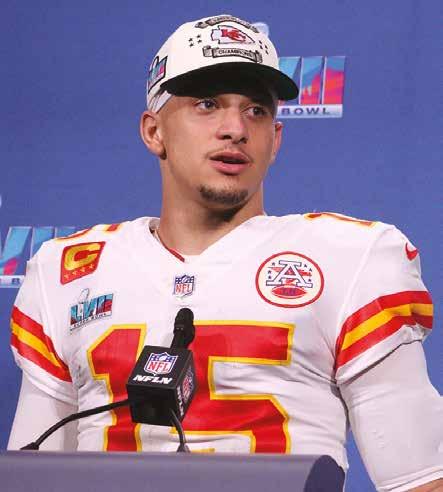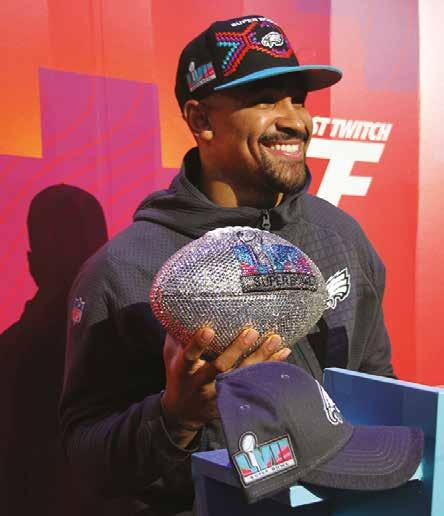
2 minute read
Hurts and Mahomes don’t cancel out the NFL’s treatment of Black quarterbacks
from Compton Bulletin
By Earl OIfari Hutchinson
There is a good reason for the euphoria legions of Blacks feel and express about the historic first of two African American quarterbacks, Patrick Mahomes and Jalen Hurts facing off in the Superbowl. It’s been a long, agonizing, painful road for them and the NFL to get to that historic point.
Advertisement

I still remember as if it was yesterday that warm fall evening at the Los Angeles Coliseum in 1973. The Los Angeles Rams quarterback James “Shack” Harris, and African American, got the start in a preseason game against the then San Diego Chargers. It seemed nearly all Black Los Angeles packed the Coliseum that night to see Shack’s performance. When he tossed a touchdown pass the Black fans exploded in near delirium. It was more than a pass, more than football, more even than a game to them. They saw this as striking a blow against the Jim Crow racism that for decades blighted one football position, the quarterback.
At least that memorable night, Shack to them seemed to refute something I often heard my uncle, a consummate NFL junky, say about the long-standing NFL bar to Blacks as quarterbacks, “They’d rather lose with a lousy quarterback than to win with a good Black quarterback.”
Though Shack in 1974 became the first Black quarterback to make the Pro Bowl it was still a rocky road ahead for Black quarterbacks.
1934 to 1946. After the ban was lifted, informal ban remained rigidly in place against Blacks at quarterback. It took another four years before George Taliaferro became the first Black to start for an NFL team at quarterback in 1950. During the next two decades the number of Blacks that played the position sparingly could be counted on one hand.
The NFL template to enforce the color bar at quarterback went like this. No matter how talented a Black college quarterback was during those years, no NFL team would draft him to play quarterback. If a team did draft him, he would get in the game only if there was an injury to the starting white quarterback, and he was the last resort. Then he would throw almost no passes. More commonly, if drafted he’d immediately be switched to another position, usually defensive back or wide receiver.
First Warren Moon after several record-breaking seasons in the Canadian Football League in the late 1970s and early 1980s made the major breakthrough for Black quarterbacks in the NFL when the Houston Oilers signed him. Later Lamar Jackson put his foot down and told the NFL he would play no other position than quarterback. Jackson refused to run dashes at the NFL combine. There was the very real suspicion that if he excelled that would be the excuse to try to shift him to running back.
This pointed to the age-old standard NFL rationales for regard-
The formal ban on Blacks in the NFL was firmly in place from n Hutch, see page 9





